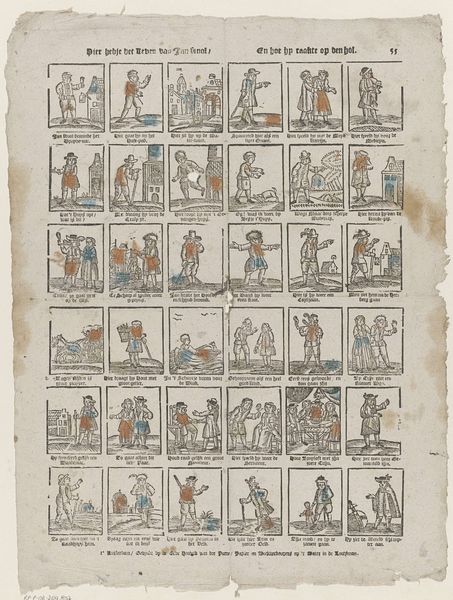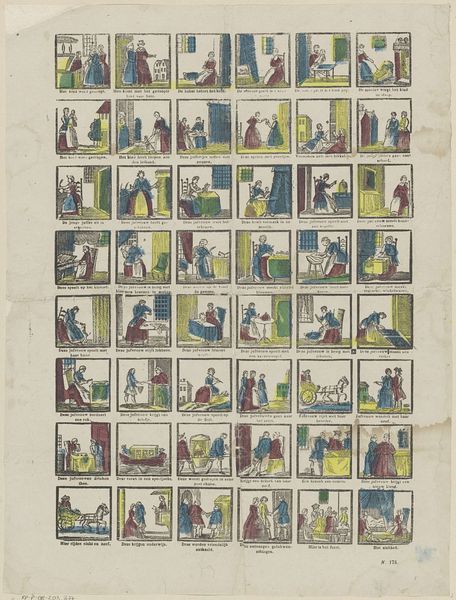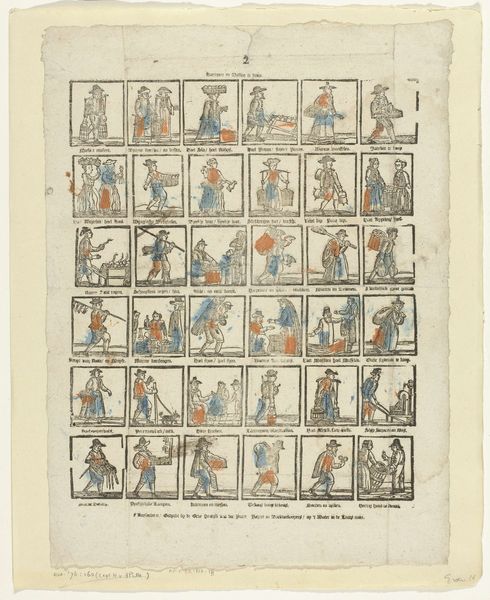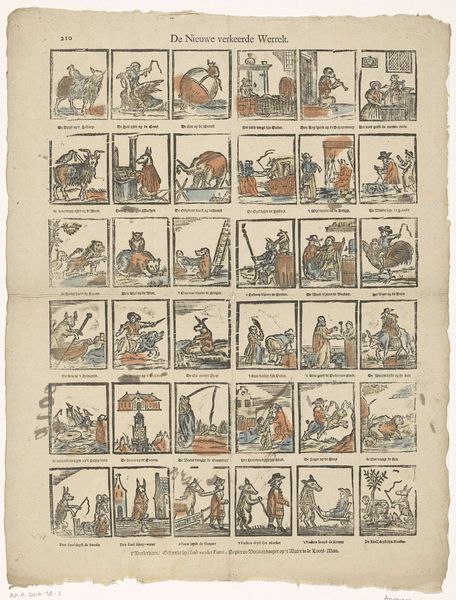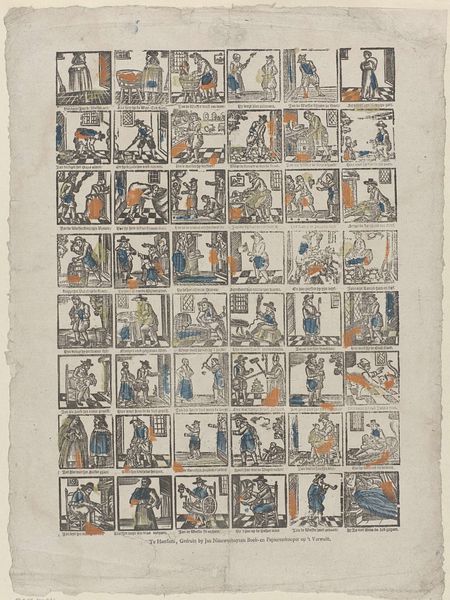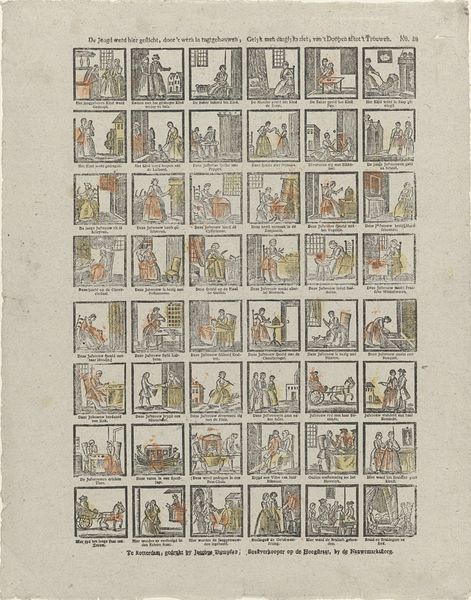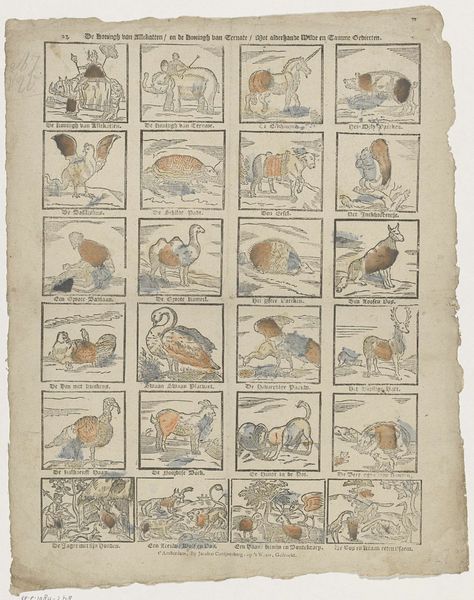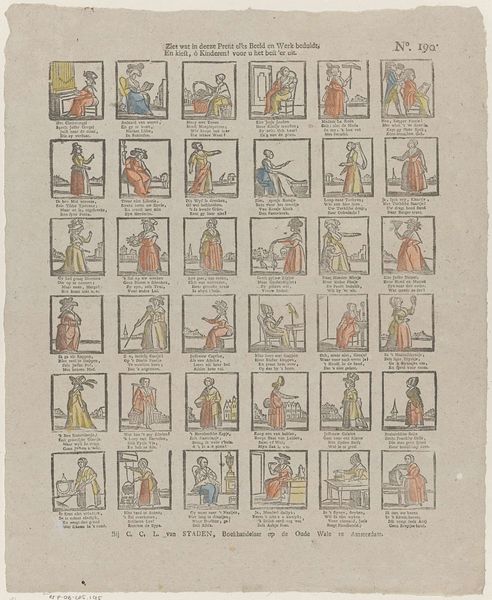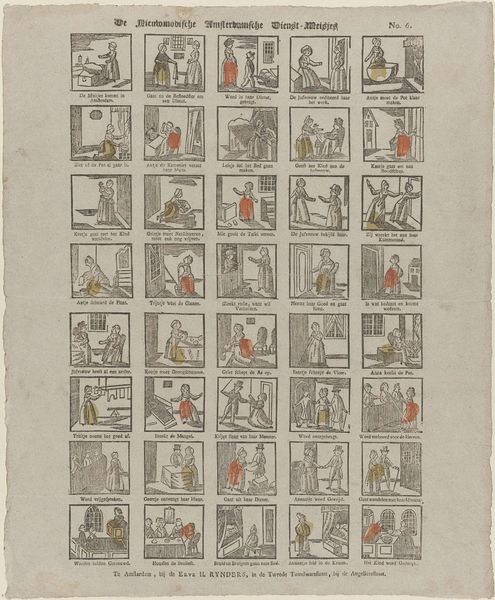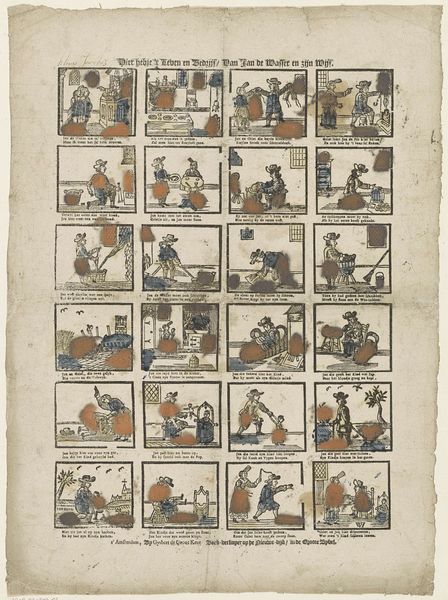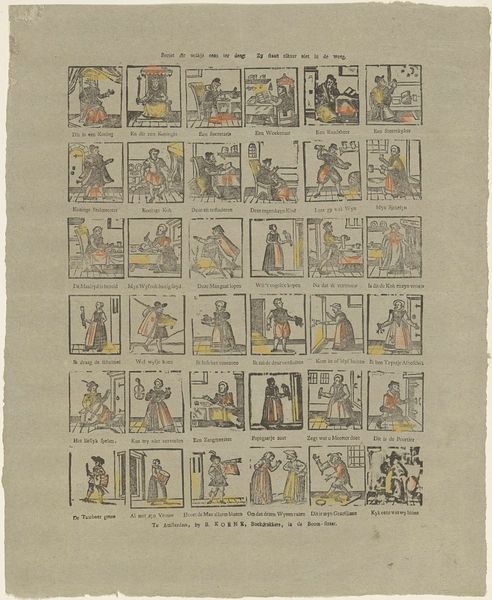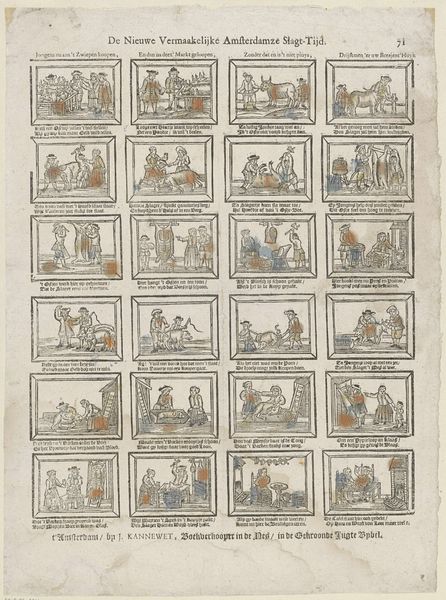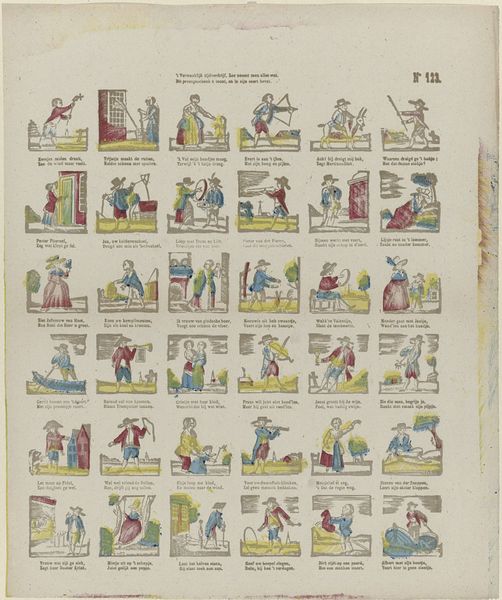
Jongens wilt u weer vermaken, hier zoo zijn veel rare snaken, sesendartig in 't getal, leestse vry, beziede al 1738 - 1767
0:00
0:00
gijsbertdegrootkeur
Rijksmuseum
mixed-media, print, etching, engraving
#
mixed-media
#
narrative-art
#
baroque
# print
#
etching
#
figuration
#
genre-painting
#
engraving
#
miniature
Dimensions: height 391 mm, width 300 mm
Copyright: Rijks Museum: Open Domain
Curator: Looking at this etching and engraving titled "Jongens wilt u weer vermaken, hier zoo zijn veel rare snaken, sesendartig in 't getal, leestse vry, beziede al" by Gijsbert de Groot Keur, dating to somewhere between 1738 and 1767, my first impression is of organized chaos. Editor: "Organized chaos" hits the mark! What I immediately notice is how this artist utilizes mixed media, specifically engraving and etching. Each tiny panel, almost a miniature in itself, demonstrates labor-intensive craftwork. This wasn't mass-produced in our sense; each sheet would've taken considerable time. Curator: Precisely! The social history of prints like this is interesting, they were a relatively accessible form of imagery. We can imagine this piece being tacked up in a home, or perhaps used as a teaching aid. Consider how the artwork would be viewed by different societal echelons at the time. Editor: Right, let’s delve a bit deeper into the images. The sheer number, arranged like playing cards or perhaps the squares on a game board, hints at narrative art with strong connections to genre painting and the tradition of figuration. Are these figures acting out scenes from daily life or illustrating well-known stories and idioms? Curator: Indeed! This was produced in Amsterdam. The choice of materials suggests a desire to disseminate visual information, accessible in form. Given its period, the materials also have significance in terms of trade networks; where did the paper come from, the inks? Editor: It's a fascinating insight to consider art as an industrial product itself! Moreover, the museum's function here plays into the picture: How has the Rijksmuseum’s context shifted and framed the value, consumption, and perception of a print like this over time? Curator: It truly exemplifies that interplay, the relationship between material, production and its broader impact on social constructs within the artworld. I think one cannot look at the function without studying the rest. Editor: Exactly. Understanding how its reception shifted since its production—from ephemeral broadside to a collected museum artifact—illuminates that the print now has layers of historical meaning to decipher, rather than mere casual appreciation. Curator: Indeed! The material tells the story; the image acts as witness. Editor: A fitting endnote! Each perspective makes the print sing to different eras.
Comments
No comments
Be the first to comment and join the conversation on the ultimate creative platform.
